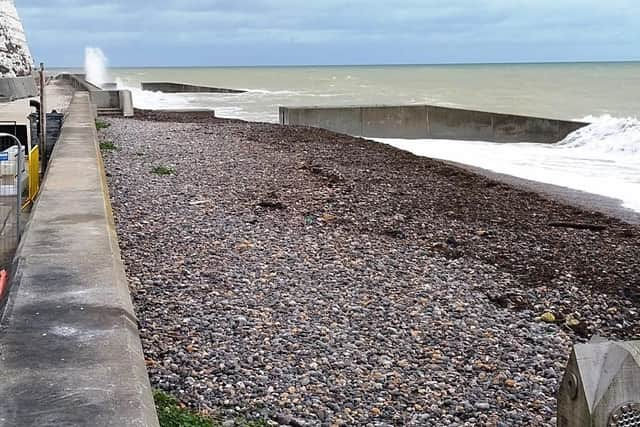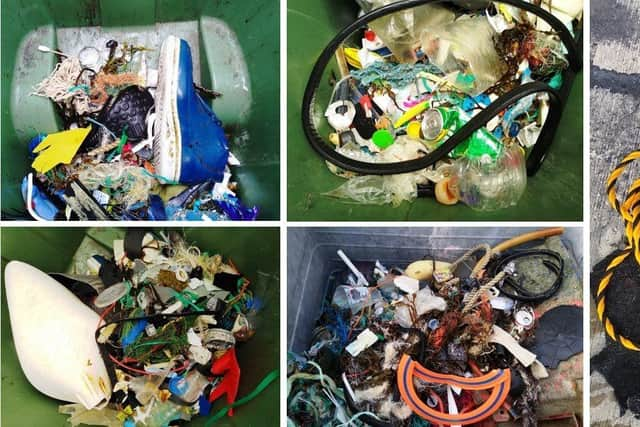The sea gives up her plastic at Greenways
and live on Freeview channel 276
Greenways beach, 100 metres of dark grey flint pebbles between Brighton Marina and Rottingdean, seems to attract plastic from the sea, maybe because it is narrow, steep and rough. Strong south winds and high tides over the period of storms Babet and Ciarán have landed a plentiful harvest.
There are several bins at Greenways, and if you are quick you can see the results for yourself. Otherwise the photographs show just a sample.
Advertisement
Hide AdAdvertisement
Hide AdTo put the quantity in perspective, the Marine Conservation Society's recently reported Great British Beach Clean averaged just over two bags per 100 metres, not all of which is likely to have been washed up from the sea.


Beach cleaners like Strandliners and MCS itemise what they find, identifying not just common litter but small fragments and ‘nurdles’, the raw material used for manufacturing plastic products. Small objects are of immediate concern because they can be ingested by marine organisms.
This was impractical at Greenways given the sheer quantity and the nature of the shingle. I could collect only what was visible, ranging in size between the orders of a centimetre and a metre. However, larger pieces can cause harm by entangling wildlife, and all will ultimately break down into microplastics, that are now being found not only in food chains but in the human body, with unknown consequences.
The beach is clean as of 3 November, so anything more that arrives can be related to the time elapsed as well as the weather. Collecting was fairly back-breaking. Litter-picking tools are not always helpful when objects are half buried or tangled in seaweed, and progress with them is slow. There was evidence that others had been at work, though I did not meet anyone. It may be helpful to record each collection so at least the quantity can be assessed.
Advertisement
Hide AdAdvertisement
Hide AdThe types of plastic I found ranged from a large plastic sheet, mats, remains of large cans and a boat’s fender, through lengths and off-cuts of rope, fishing line and lures, work gloves, strips and fragments of hard plastic, chunks of expanded polystyrene, ties, bottletops and similar, and what look like fragments of baskets.


This suggests their origin is 'industrial'. Shoreham harbour is 15 km west, Newhaven 10 km east, and the Marina 2 km west. There were also a few ‘domestic’ items like plastic bottles, remains of aluminium cans, shoes, spectacle frames, cigarette lighters, and bits of plastic imitation foliage.
As I was collecting, I was struck by the lack of interest, and presumably awareness, of other visitors to the beach and the undercliff promenade behind, who seemed entirely occupied with exercising themselves and their dogs, talking to their phones, collecting bits of driftwood, or simply gazing into the far distance.
This is disappointing when you consider that the Brighton city-region styles itself as ‘green’, as well as housing two universities.
Advertisement
Hide AdAdvertisement
Hide AdWe are constantly reminded today in press, media and documentaries of the harm plastic causes in the environment, especially to marine life. I have also collected large amounts of plastic and other litter from clifftops and river banks. There should be zero tolerance for plastic in or anywhere near the sea.